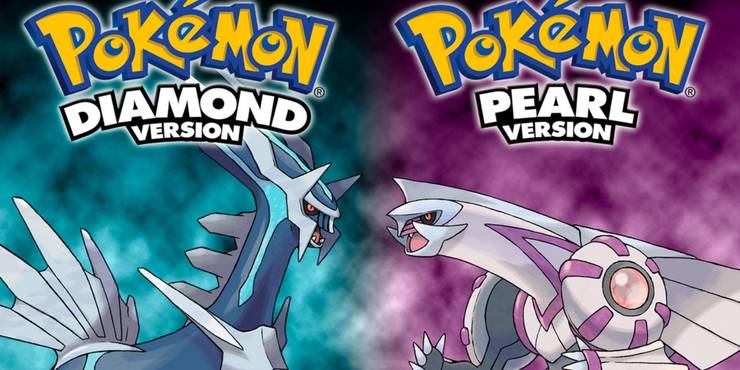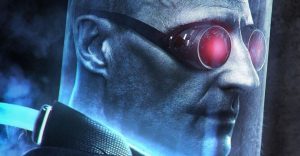10 Best Pokémon Games, According To Ranker

Being the highest-grossing media franchise of all time, Pokémon has built up a large catalog of beloved mainline games over its 25-year-plus history. Though more recent entries have been growing staler from the conventional formula, the franchise has earned plenty of merits for its early days and throughout the late 2000s.
The Ranker voting community has put together the 10 best games in the main series, comprised of what most fans consider to be the tried-and-true classics. They range from the original Game Boy to the handheld game-changer that was the Nintendo DS.
10 Pokémon Crystal

Though the “third-version game” is one of the several aspects of the Pokémon games that aged poorly, Crystal offered the complete experience for the acclaimed Johto collection of games. It adjusted some of the wild encounters players could find to make certain species more accessible, as well as some added story and gameplay mechanics.
The Suicune side quest was a welcome addition for a fan-favorite legendary Pokémon. Even more so, Crystal was the debut for the Battle Tower, which greatly helped in providing more end-game content and a refreshing challenge. Its 3DS Virtual Console re-release also integrated the Celebi side quest worldwide for the first time.
9 Pokémon Red & Blue

The games that started it all were revolutionary back in 1996 (Japan) and 1998 (internationally). They introduced classic Pokémon that even people unfamiliar with the franchise knew while also redefining handheld multiplayer elements. Completing the Pokédex was something more realistic at the time, creating and establishing the addictive gameplay loop of the series that held for so long.
Understandably, the games are incredibly dated by today’s standards, and nostalgia certainly has a part to play. But for those with the 3DS Virtual Console releases, they can admittedly still be entertaining romps through gaming history.
8 Pokémon Diamond & Pearl

For many longtime fans, 2006’s Diamond and Pearl games were the next big jumping-on points to the franchise. They were the first main games on the Nintendo DS, using new features to make older Game Boy Advance games compatible and refining the series’ vintage pixel art to a beautiful new degree.
The higher resolution graphics made for some of the most memorable locations in the franchise. And, of course, it introduced a new batch of some of the most popularly-used Pokémon to date. Even more so now with the recent Brilliant Diamond and Shining Pearl remakes for the Nintendo Switch.
7 Pokémon Yellow

Not counting Red/Blue/Green, Yellow was technically the “first” third-version game in the series. The game, as expected, saw most of the content from its predecessors unchanged, but made some fun alterations to capitalize on the Pokémon anime’s breakout success.
Characters like Jesse and James from Team Rocket made their appearance, and the player even starts with a Pikachu. Similarly, it took some welcome cues from specific episodes for players to get Charmander, Squirtle, and Bulbasaur in the same playthrough. As far as tie-in games go, Yellow provided enough twists for the time to justify its release.
6 Pokémon Ruby & Sapphire

The Hoenn region ushered in the Game Boy Advance era of Pokémon with Ruby and Sapphire in 2002/2003. While the color palette of the GBA games’ pixel art is somewhat washed out, they still hold up nicely today.
These games were the start of much-needed quality-of-life enhancements being made for Pokémon, like the addition of the running shoes to speed up traversal. Many of the new creatures of Ruby and Sapphire‘s generation are also regarded by many fans as classics today, including the iconic Legendary trio.
5 Pokémon Gold & Silver

The first games of the Johto region served as great blueprints for how to make great sequels. Gold and Silver essentially improved upon every aspect of Red, Blue, and Yellow thinkable. On top of bringing in 100 new species of Pokémon, the games tightened technical performance, vastly improved 2D sprites/pixel art, and gave more post-game content.
To this day it features a fan-favorite feature yet to return in a mainline game, and that’s being able to return to the previous region. Being able to earn 16 Gym Badges and battle the protagonist from the first games is a good example of fan service with substance.
4 Pokémon FireRed & LeafGreen

While fans are mostly tired of the Kanto region getting disproportionate amounts of fanservice, FireRed and LeafGreen were excellent remakes of the originals on the GBA. It’s arguably the definitive way to play through the first generation of Pokémon games, should players have access to them.
Though the Yellow remakes for the Switch – Let’s Go, Pikachu!/Eevee! – were solid nostalgia trips with a twist, FireRed and LeafGreen had a better balance of faithfulness and new content. The main story is that of the originals with all the modern (and desperately needed) improvements, the Sevii Isles post-game questline, the generation 2-3 Pokémon they brought, plus connectivity with Ruby/Sapphire/Emerald.
3 Pokémon Emerald

The Hoenn region’s third-version game was the most streamlined way to play through the generation at the time. Emerald slightly altered the story from Ruby and Sapphire to include the flagship Rayquaza as the star. Meanwhile, it still gave players the chance to get both Groudon and Kyogre in the post-game.
In addition, Emerald also brought back some generations 1-2 Pokémon, which were sorely needed to freshen up the region’s available roster. Another longtime fan-favorite feature made its debut here in the form of the Battle Frontier. This post-game facility was an exciting challenge for players that threw in different gimmicks to make players adapt in battle. Earning all seven of their medals was a great way to prolong game time naturally for those eager for new obstacles to overcome.
2 Pokémon Platinum

Diamond and Pearl were certainly well-received when they were released, but they had some gameplay issues that bogged down the experience somewhat over time. Platinum fixed the original pair’s problems, namely the slow character movement and text speeds that hurt the pacing of the games. However, another notable change was increasing the main game’s regional Pokédex from 150 species to 210.
As great as Sinnoh was, it needed to bolster its wild Pokémon variety. In terms of new gameplay features, it included the Distortion World with Giratina’s new form and the first DS version of the Battle Frontier. Even after Brilliant Diamond and Shining Pearl, it’s perhaps the best way to play through Sinnoh if players still have it on hand.
1 Pokémon HeartGold & SoulSilver

Many fans frequently cite them as the best games in the franchise, so it isn’t too surprising to see Pokémon HeartGold and SoulSilver top Ranker’s list. They’re perhaps the best remakes in the franchise as a whole, faithfully recreating what made Gold, Silver, and even Crystal as great as they were. But even more importantly, it added more on top of the main story and post-game to make them truly worthwhile.
More Pokémon from generations 1 and 2, plus 3 and 4 were added through altered wild encounters. This includes a Safari Zone and multiple post-game side quests for other species. Arguably the only issue with HeartGold and SoulSilver was not fixing the originals’ admittedly poor level curve.
About The Author

















